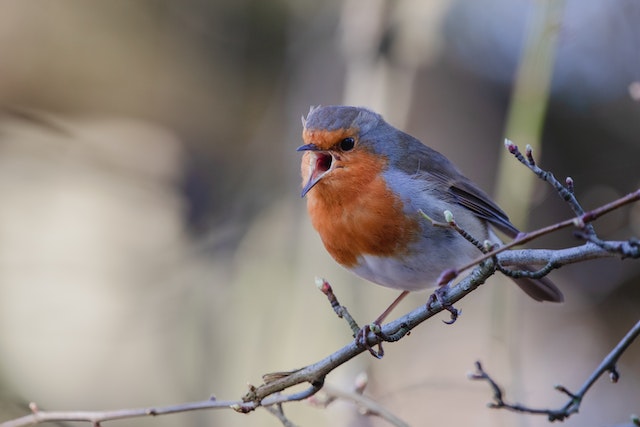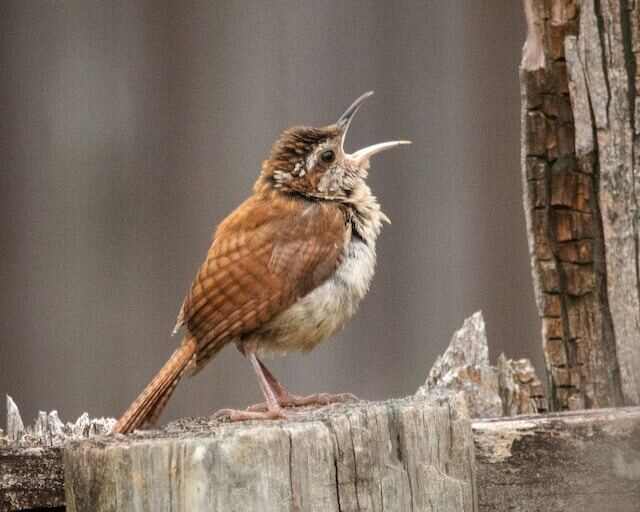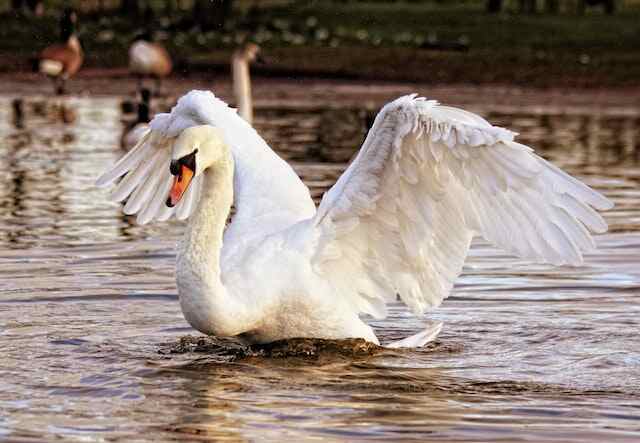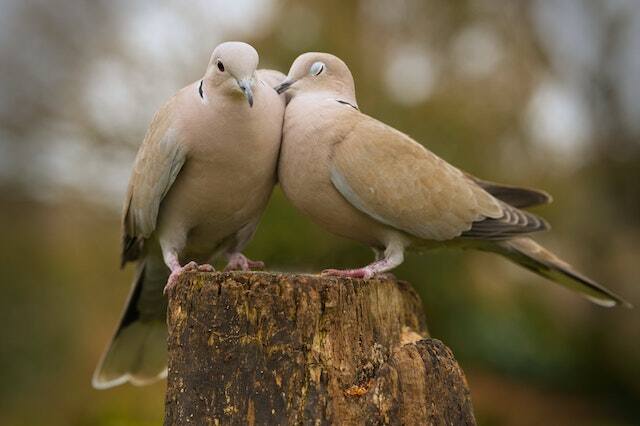Birds chirp, flap their wings, and even engage in feather fashion shows, but are they just putting on a show or is there something more behind their antics? Do Birds Communicate With Each Other? The short answer is a resounding YES!
In this article, we’ll explore the fascinating world of bird communication, unraveling the secrets behind their tweets, calls, and fancy feather displays. Get ready to be amazed by the intricate language of our feathered friends!
Table of Contents
- 1 Types of Bird Communication
- 2 How Birds Communicate with Each Other
- 3 The Role of Bird Communication in Social Behavior
- 4 How Humans Study Bird Communication
- 5 Conclusion
- 6 FAQs: Do Birds Communicate With Each Other?
- 6.1 How do birds communicate with each other?
- 6.2 Why do birds communicate with each other?
- 6.3 Do all bird species communicate with each other?
- 6.4 Can birds understand each other’s calls and songs?
- 6.5 Can birds communicate with birds from different species?
- 6.6 Are bird vocalizations the most common form of communication?
- 6.7 How do birds use body language for communication?
- 6.8 Do feather displays serve a communication purpose?
- 6.9 Can humans understand bird communication?
- 6.10 How does understanding bird communication benefit us?
- 7 Author
Explanation of Bird Communication
Bird communication encompasses a wide range of behaviors used to convey information between individuals. Vocalizations are one form of bird communication that includes songs, calls, and alarm calls.
Songs are typically used by males to establish territory and attract mates during breeding season.
Calls are used for a variety of purposes such as warning others about predators or communicating with nearby birds. Alarm calls are high-pitched sounds used to alert others in the flock about potential danger.
Visual displays are another important form of bird communication. Body language is often used during courtship rituals to signal interest or dominance between mates.
Feather displays can also communicate a variety of messages, such as aggression or submission.
Other forms of bird communication include scent marking and touch, although they are less well understood compared to vocalizations and visual displays.
Importance of Understanding Bird Communication
Understanding bird communication is crucial for several reasons. For one, it can help us better appreciate these amazing creatures by providing insight into their complex social lives and fascinating behaviors.
Additionally, studying bird communication can also have practical applications, such as conservation efforts.
For example, understanding how birds use vocalizations to establish territories can help conservationists identify critical habitats for various species.
Furthermore, studying bird communication can provide valuable insights into animal behavior more broadly.
Many animals use similar forms of communication such as vocalizations or body language to convey information with each other.
Overall, understanding how birds communicate provides us with a deeper appreciation for their complexity while offering practical applications for conservation and animal behavior research.

Types of Bird Communication
Vocalizations
Bird vocalizations are perhaps the most well-known and easily recognizable form of bird communication. Within bird vocalizations, there are different types of calls that serve various purposes.
Songs
Birds use songs for a variety of reasons, including attracting mates, defending territories, and communicating with potential rivals.
Male birds often sing to establish their presence and defend their territory against other males who may be looking to mate or feed in their area.
These songs are typically complex and melodious, often consisting of a series of distinct notes or phrases that vary in pitch, tone, volume, and tempo.
Calls
Bird calls are used for a wide range of purposes, such as warning other birds about predators or signaling the location of food sources. These simpler vocalizations can be made by both male and female birds, but they usually lack the complexity found in songs.
Alarm calls
Alarm calls are loud warning signals used by birds to alert others in the flock to potential danger, such as predators or threats from nearby humans.
Alarm calls can be highly specific based on the type of predator encountered; for example, some birds have distinct alarm calls for snakes while others use different alarms for hawks.
Visual communication
Many bird species also communicate using visual signals such as body language and feather displays.
Body language
Birds use body language to convey messages such as aggression or submission during social interactions. For example, aggressive displays like head-bobbing or wing-flapping can indicate dominance, while crouching low with wings spread is a sign of submission.
Feather displays
Feather displays are another form of visual communication, wherein birds use their feathers to communicate different messages.
For example, peacocks use their brightly colored and patterned tail feathers to attract mates, while turkeys puff up their feathers and fan out their tails to establish dominance.
Overall, bird communication is a complex and diverse system that incorporates both vocal and visual signals.
Understanding the different types of bird communication can provide important insights into the behavior and social dynamics of birds in the wild.

How Birds Communicate with Each Other
Birds are highly social animals, and they rely on communication to interact with others in their species. Bird communication can be divided into two main categories: distance communication and proximity communication.
Distance Communication
Distance communication is used when birds are far away from each other but still need to communicate. One of the most common forms of distance communication is through vocalizations such as songs and calls.
Bird songs are elaborate vocalizations used by male birds during the mating season to attract females. For example, male canaries sing complex melodies consisting of different notes and trills to impress potential mates.
Similarly, male woodpeckers drum on trees to create a loud noise that travels long distances, attracting females from afar. In addition to mating purposes, birds also use a variety of alarm calls to warn others of predators or danger.
These alarms can signal the type and level of threat present in the environment. For instance, certain bird species have alarm calls that convey whether the predator is aerial or terrestrial.
Visual signals such as flashing feathers or wing movements can also be used for distance communication among birds.
For example, many bird species engage in courtship displays where males puff out their colorful feathers while spreading their wings and tails to impress females from afar.
Proximity Communication
Proximity communication occurs when birds are close enough together that they can see or hear each other clearly without having to use long-distance vocalizations or visual signals.
Calls and songs are still important forms of proximity communication between nearby birds, since they allow individuals within earshot distance to communicate with each other effectively.
For instance, some bird species have specific calls for signaling food sources nearby or warning others about potential predators in the area.
Moreover, body language and feather displays play an essential role in proximity communication during courtship rituals among certain bird species like peacocks.
During courtship, males display elaborate feather patterns and make specific movements with their bodies and wings, which function to attract females. Bird communication is complex and varied.
Birds use a combination of vocalizations, visual signals, body language, and feather displays to communicate with each other both from a distance and in proximity.
Understanding how birds communicate can provide insights into their social behavior, mating habits, and ecology.

The Role of Bird Communication in Social Behavior
Communication between Parents and Offspring
Birds use communication to interact with their offspring, ensuring their survival and development. For many bird species, the parents take care of the young until they are ready to fend for themselves.
During this time, communication plays a vital role in feeding, protecting and teaching the young ones.
Parent birds use specific calls to attract the attention of their offspring when it is time to feed or when there is danger nearby.
Similarly, they teach their young ones different types of vocalizations that help them identify food sources or signal danger.
By using different sounds for various situations, parent birds ensure that their offspring are well-equipped for survival.
Communication between Mates during Courtship and Breeding Season
Birds often use complex vocalizations and visual displays during courtship rituals to attract a mate. Male birds are usually the more colorful sex and use these colors as part of an intricate display to impress females.
In some cases, males also produce unique songs or calls that serve as a way for females to identify potential mates from afar.
Once paired up, male and female birds continue communicating with each other throughout the breeding season through both vocalizations and body language.
Communication within Flocks for Social Bonding and Feeding Coordination
Birds form social bonds through communication within flocks or groups. Flocks often have specific vocalizations used only by members of that group as a means of identification.
Members also communicate with each other through body language such as head bobbing or wing flapping, which helps coordinate group movements during flight or feeding sessions.
Additionally, some bird species will share food with others in their flock while making specific calls to indicate trustworthiness.
A World Without Bird Communication?
The importance of bird communication in social behavior extends beyond the bird kingdom. It is hard to imagine a world without the songs of birds, the beauty of their displays, or the coordination they exhibit in flocks.
Bird communication has served as a source of inspiration for humans in art and music, but it also plays an essential role in our ecology.
Without birds communicating with each other, bird populations could suffer due to a lack of survival skills or difficulty in coordinating feeding and migration patterns.
Studying bird communication can help us better understand these complex social behaviors and ensure that we continue to appreciate the beauty and importance of these fascinating creatures.

How Humans Study Bird Communication
Field observations using binoculars, microphones, or cameras
Bird communication can be observed in the wild through field observations using tools such as binoculars, microphones or cameras. Observations can reveal the nuances of bird communication and behavior in their natural habitats.
Binoculars can help identify specific bird species and their behaviors, while microphones pick up various bird vocalizations.
Cameras allow for visual documentation of bird behavior and interactions, including courtship rituals or feeding behaviors. Observations through these tools have led to several breakthrough discoveries in bird communication studies.
For example, researchers discovered that some birds use alarm calls to warn others of different types of predators they encounter based on the pitch and tone of the call.
The use of field observation techniques also helps researchers understand how different birds communicate with each other over long distances.
Experimental studies in controlled environments to observe bird behavior under specific conditions
Experimental studies involve controlling certain variables and observing how birds respond to those changes.
This approach allows researchers to study specific aspects of bird communication such as vocalization patterns, body language or feather displays in a more controlled setting.
Through experimental studies, scientists can recreate real-life situations that birds encounter, such as mating rituals or predator attacks, to study their reactions and behavior.
Some experiments involve manipulating the environment by adding stimuli such as recorded calls or altering lighting conditions.
Experimental studies have led to significant findings in understanding how birds communicate with each other, even across species barriers.
For instance, researchers discovered that some species of birds have an innate ability to learn songs from other species by mimicking them.

Conclusion
Bird communication is an important aspect of avian life that has fascinated humans for centuries. Through research efforts involving field observations and experimental studies, we have made significant progress towards understanding how different types of birds communicate with each other.
Today, we know that birds use a variety of vocalizations, visual displays and body language to communicate with each other.
Researchers have also discovered how some birds use alarm calls to alert others of potential dangers, while others use songs and feather displays for courtship purposes.
Further research in this field will help us appreciate the complexity of bird communication and their cognitive abilities, thereby leading to better conservation efforts on their populations and habitats.
FAQs: Do Birds Communicate With Each Other?
How do birds communicate with each other?
Birds communicate through a variety of methods including vocalizations, visual displays, body language, and feather displays. They use songs, calls, and alarm calls for vocal communication, while body movements and feather displays convey messages of aggression, submission, and courtship.
Why do birds communicate with each other?
Birds communicate to establish territories, attract mates, warn of danger, coordinate feeding and migration, and maintain social bonds within flocks. Communication is vital for survival, reproduction, and maintaining social structure among bird populations.
Do all bird species communicate with each other?
Yes, all bird species communicate with each other in some form. However, the specific methods and complexity of communication can vary between species. Some birds have elaborate songs and displays, while others rely more on simpler calls or visual signals.
Can birds understand each other’s calls and songs?
Birds within the same species can generally understand and respond to each other’s calls and songs. These vocalizations carry specific meanings and serve as a way for birds to identify individuals, establish territories, and communicate information about food sources, predators, or mating opportunities.
Can birds communicate with birds from different species?
While birds primarily communicate within their own species, there are instances of inter-species communication. Some birds mimic the songs or calls of other species, either as a form of territorial challenge or for learning purposes. However, full understanding between different species is limited.
Are bird vocalizations the most common form of communication?
Yes, vocalizations are one of the most common and distinctive forms of bird communication. Songs, calls, and alarm calls are widely used for various purposes such as mating, defending territories, warning of danger, and coordinating group activities.
How do birds use body language for communication?
Birds use body language to convey messages of aggression, submission, courtship, and territoriality. They may engage in displays like head-bobbing, wing-flapping, or specific postures to communicate dominance, submission, or interest to other birds.
Do feather displays serve a communication purpose?
Yes, feather displays play a crucial role in bird communication. Vibrant and patterned feathers are used by males to attract mates during courtship rituals, while other displays indicate aggression, submission, or territoriality. Feathers can convey important information about a bird’s health, genetic quality, and social status.
Can humans understand bird communication?
While humans can study and decipher certain aspects of bird communication, we cannot fully understand or interpret their language like other birds can. However, through research and observation, we can gain insights into the meanings behind certain vocalizations and behaviors.
How does understanding bird communication benefit us?
Understanding bird communication provides valuable insights into avian behavior, social dynamics, and ecology. It aids in conservation efforts by identifying critical habitats, helps us appreciate the complexity of bird life, and allows for a deeper connection with the natural world.



